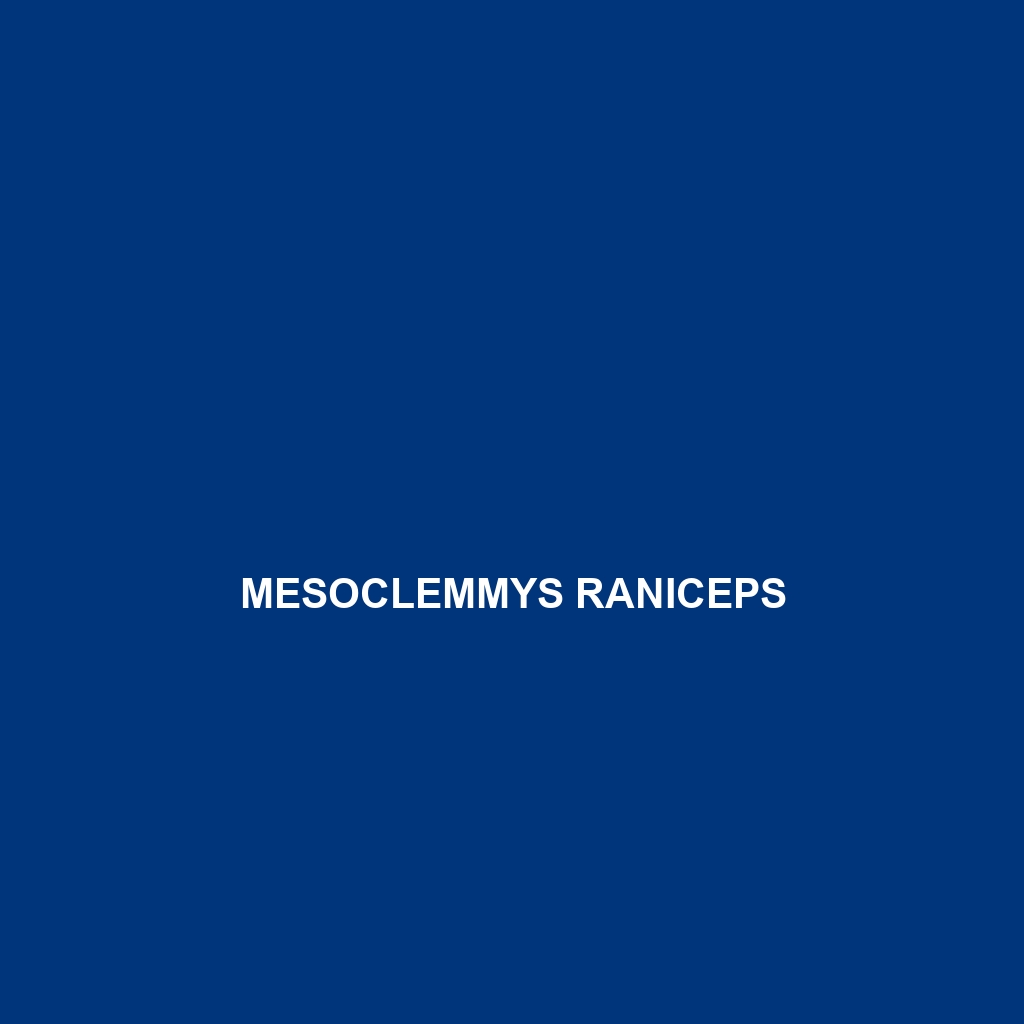Common Name
Mesoclemmys raniceps
Scientific Name
Mesoclemmys raniceps
Habitat
Mesoclemmys raniceps, commonly known as the Red-headed Amazon River Turtle, primarily inhabits tropical environments, especially in the river basins of the Amazon rainforest region. This species is notably found in countries such as Brazil, Colombia, and Peru, where it thrives in freshwater ecosystems including slow-moving rivers, streams, and flooded forests. These habitats are characterized by a warm, humid climate that supports rich biodiversity. The presence of aquatic vegetation provides both shelter and food, creating ideal living conditions for the Mesoclemmys raniceps.
Physical Characteristics
The Mesoclemmys raniceps exhibits distinct physical traits that make it recognizable. It typically measures between 20 to 45 cm in shell length, with a broad, flattened carapace that can be dark brown or olive in color. One of its most striking features is its vivid red or orange head, which contrasts sharply with its shell coloration. This species also has webbed feet that facilitate swimming and movement in its aquatic habitat. Juveniles tend to have more vibrant colors, which fade as they mature, making them less conspicuous in their environment.
Behavior
The behavior of Mesoclemmys raniceps is largely influenced by its semi-aquatic lifestyle. These turtles are primarily diurnal, showing most activity during daylight hours. They are known to bask on logs and riverbanks to regulate their body temperature. Socially, Mesoclemmys raniceps tends to be solitary or found in small groups, especially during the breeding season. Their mating rituals involve elaborate courtship displays that can include head bobbing and circling, attracting potential mates. They are also known for their shy nature, retreating into the water when disturbed.
Diet
Mesoclemmys raniceps is classified as an omnivore, with a diverse diet that includes both plant and animal matter. Its diet predominantly consists of aquatic vegetation, fruits, and small invertebrates such as insects and crustaceans. The turtles exhibit opportunistic feeding behavior, utilizing their strong jaws to crush shells or glean plant matter from the riverbeds. This varied diet not only meets their nutritional needs but also plays a significant role in the health of their aquatic environments. The consumption of fruits aids in seed dispersal, contributing to the growth of plant life in their ecosystem.
Reproduction
The reproductive cycle of Mesoclemmys raniceps typically occurs during the rainy season, which provides suitable conditions for nesting. Females usually select sandy or soft soil areas near water bodies for nesting. After mating, the female lays approximately 10 to 20 eggs, which she buries in the sand. The gestation period lasts about 60 to 80 days, after which hatchlings emerge and make their way to the water. Maternal care is minimal, as the young turtles are independent from birth, relying on their instincts to find food and shelter in their aquatic environment.
Conservation Status
The conservation status of Mesoclemmys raniceps is currently listed as Vulnerable on the IUCN Red List. Habitat destruction, primarily due to deforestation and pollution, poses significant threats to their populations. Additionally, illegal wildlife trade and human encroachment further exacerbate these challenges. Conservation efforts include habitat protection initiatives and environmental awareness campaigns aimed at preserving their natural habitats. Efforts are ongoing to monitor populations and implement protective measures to ensure the survival of this unique species.
Interesting Facts
Despite being relatively lesser-known, Mesoclemmys raniceps possesses several intriguing traits. Their striking coloration serves not just for attraction but may also be a defense mechanism, as their bright colors can signal toxicity or unpalatability to potential predators. Additionally, these turtles have been observed exhibiting social behavior, such as sharing basking spots—a trait that is not commonly seen in many turtle species. Their adaptability to different water conditions showcases their resilience and ability to thrive in varying environments.
Role in Ecosystem
Mesoclemmys raniceps plays a crucial role in its ecosystem, contributing to the balance in aquatic environments. As both predator and prey, it helps regulate populations of aquatic plants and invertebrates. By consuming fruits and aiding in seed dispersal, the turtle supports the growth of vegetation, which in turn provides habitat for other wildlife. Their presence indicates a healthy aquatic system, emphasizing the importance of preserving this species to maintain ecological integrity.
